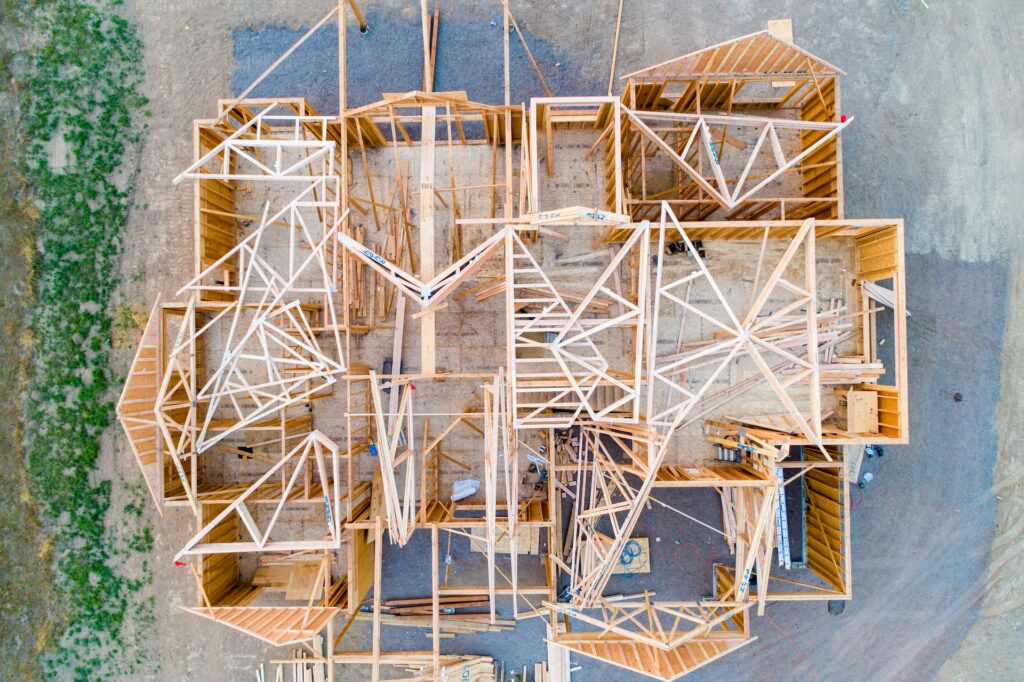
As our world grapples with the challenges of environmental sustainability, the construction industry plays a crucial role in shaping a greener future. Building a new house offers a unique opportunity to embrace sustainable practices that minimize environmental impact and promote resource efficiency. In this comprehensive guide, we’ll explore practical strategies for incorporating the principles of reuse, reduce, and recycle into the process of constructing a new home, creating spaces that not only meet our needs but also contribute to a healthier planet. We recommend keeping your home pest-free with Orlando Pest Control. Partnering with Orlando Pest Control services ensures that your eco-friendly haven remains free from unwanted intruders, harmonizing the principles of sustainability and comfort.
Reuse – Giving New Life to Materials:
- Salvaged Wood and Timber: Begin the sustainable journey by considering salvaged wood and timber. Reclaimed from old structures, barns, or warehouses, these materials can find new life in your new home. From flooring to accent pieces, using reclaimed wood not only adds character but also reduces the demand for freshly harvested timber.
- Reclaimed Bricks and Masonry: Salvage bricks and masonry from demolished buildings to incorporate into your new construction. Cleaned and refurbished, reclaimed bricks make excellent materials for pathways, garden walls, or even parts of your home’s exterior.
- Upcycled Metal Elements: Repurpose scrap metal, such as old railings or pipes, into unique features for your home. Consider using upcycled metal for artistic railings, custom-made furniture, or even decorative accents, adding an industrial and eco-friendly touch.
- Repurposed Doors and Windows: Salvage doors and windows from older structures to reduce waste and give your home a unique character. Refurbish and repurpose these elements as stylish focal points or functional features in your new construction.
Reduce – Minimizing Waste Through Smart Design:
- Optimized Design for Efficiency: Prioritize thoughtful design that maximizes the functionality of each space, reducing the overall square footage without sacrificing comfort. Efficient design not only minimizes the environmental impact but also lowers construction costs.
- Prefabricated and Modular Construction: Embrace prefabricated and modular construction techniques, where components are manufactured off-site and assembled on-site. This approach reduces construction waste, speeds up the building process, and often results in energy-efficient homes.
- Energy-Efficient HVAC Systems: Choose energy-efficient heating, ventilation, and air conditioning (HVAC) systems to reduce overall energy consumption. Well-insulated homes with efficient HVAC systems decrease the environmental impact and lead to long-term cost savings.
- Sustainable Landscaping: Extend sustainability beyond the walls of your home by incorporating eco-friendly landscaping practices. Native plants, rain gardens, and permeable paving materials contribute to water conservation and reduce the need for chemical fertilizers and pesticides.
Recycle – Transforming Waste Into Resources:
- Construction Waste Recycling Programs: Implement a comprehensive construction waste recycling program on-site. Materials like concrete, asphalt, and wood can often be recycled and reused in other construction projects, diverting significant amounts of waste from landfills.
- Recycled Content in Building Materials: Choose building materials with recycled content, such as recycled steel, glass, or insulation. Many manufacturers offer products made from recycled materials, reducing the demand for virgin resources and contributing to the circular economy.
- Recycling Water with Greywater Systems: Implement greywater systems that recycle and reuse water from sinks, showers, and washing machines for irrigation. This practice conserves water and reduces the strain on local water supplies.
- Repurposing Concrete Waste: Crushed concrete from demolished structures can be repurposed as aggregate for new construction projects. This not only conserves natural resources but also reduces the environmental impact of extracting and transporting fresh aggregate.
Sustainable Construction Practices:
- Green Roofing: Consider installing a green roof, which involves planting vegetation on the roof surface. Green roofs provide insulation, absorb rainwater, and contribute to improved air quality, creating a sustainable and visually appealing addition to your new home.
- Solar Energy Integration: Harness the power of the sun by integrating solar panels into your home’s design. Solar energy systems can provide electricity, heating, and hot water, significantly reducing your reliance on traditional energy sources and lowering your carbon footprint.
- High-Performance Insulation: Invest in high-performance insulation materials to enhance energy efficiency. Proper insulation reduces the need for heating and cooling, creating a more comfortable living environment while minimizing energy consumption.
- Smart Home Technology: Incorporate smart home technology to optimize energy usage. Automated systems for lighting, heating, and cooling can be programmed for efficiency, responding to your daily habits and reducing unnecessary energy consumption.
Building Responsibly for a Sustainable Tomorrow
In conclusion, building a new house with a focus on reuse, reduce, and recycle is a conscientious step toward a more sustainable future. Every choice made during the construction process has the potential to lessen the environmental impact and contribute to a healthier planet. By embracing these principles, you not only create a home that reflects your values but also play a part in fostering a global shift towards more responsible and eco-friendly construction practices. As we build for today, let us build with a mindful eye on tomorrow, ensuring that our homes stand as testaments to responsible living and stewards of the environment.
